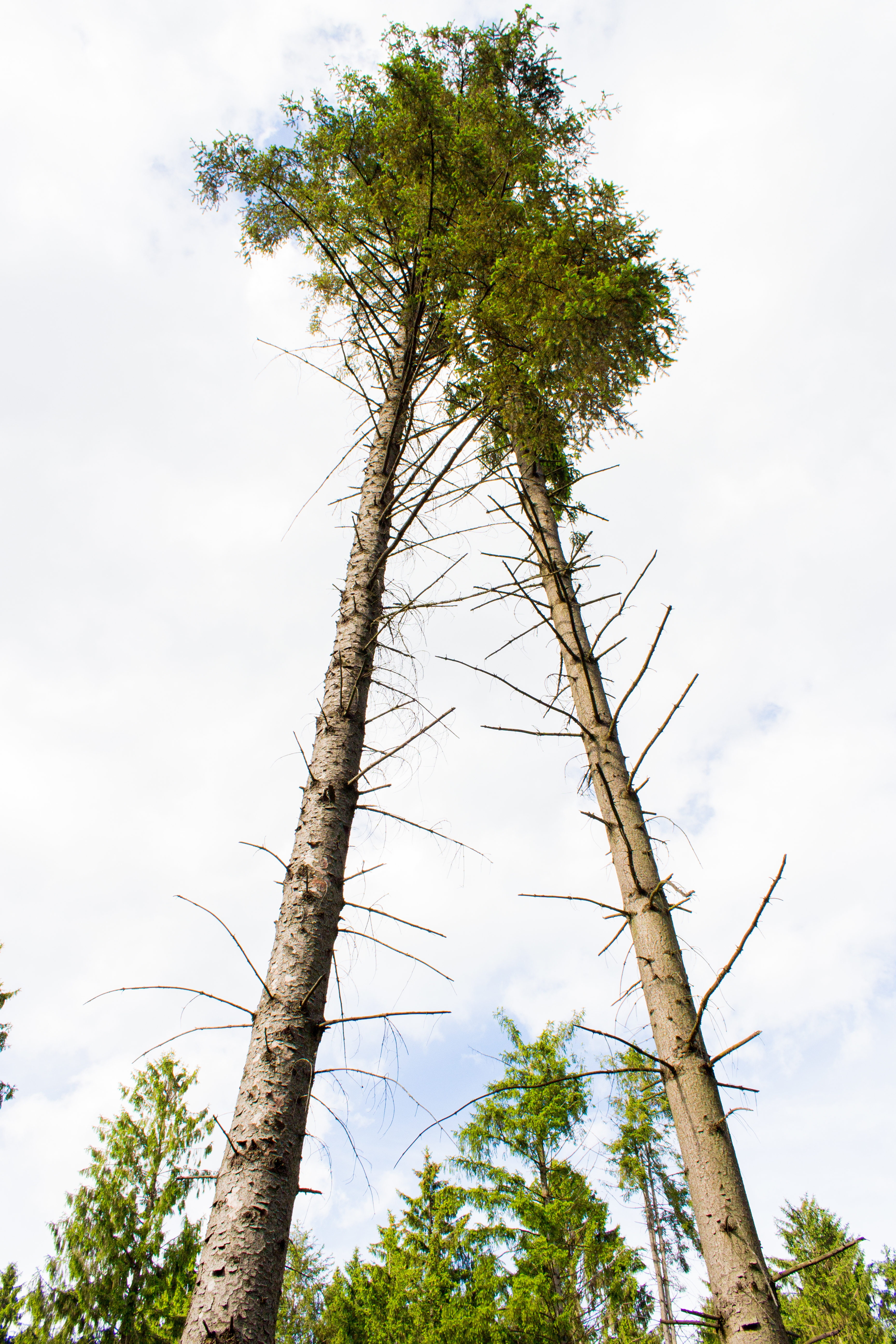
As a homeowner, identifying hazardous trees on your property is crucial to ensuring safety and preventing property damage. According to professional arborists, a hazardous tree has structural defects, such as compromised stems or branches, that pose significant risks to people, infrastructure, and objects. If you notice such a tree on your premises, arbor & Acre can help. We leverage extensive industry expertise and knowledge to assess the potential for failure, environmental conditions, and the underlying cause. Do not wait until a hazardous tree causes devastating damage; call a trusted tree care company in Bonaire, GA and get ahead of the problem.
A tree is considered hazardous due to weakened parts or compromised structural stability. While the causes can vary, they usually fall into two categories: non-biological or biological factors. When you are unsure about the condition of a tree on your premises, consulting a tree service provider can help you make informed decisions. Unlike untrained individuals, arborists evaluate vital aspects to determine a tree’s likelihood to fail, such as local growing conditions and potential for injuries and property damage.
If you have trees in your backyard, investing in routine structural assessments is crucial to maintaining healthy and durable trees. Let’s delve into the most common defects you should look out for and the best course of action.
The most obvious sign your tree is unhealthy and potentially hazardous is the presence of dead or dying parts. While some species can retain damaged branches for a long time, delaying professional intervention can cause further damage and premature tree removal. Since minor signs of deterioration can go undetected until the issue worsens, routine inspections by a reputable tree care company are vital to identifying damage early.
Another common structural issue that qualifies a tree as hazardous is broken branches. This is a common occurrence during adverse weather such as strong winds, heavy rains, and lightning strikes. Sometimes, broken branches remain suspended in the canopy, posing safety risks and property damage. If you notice a branch precariously hanging in your backyard, hire a certified arborist to prune or trim your trees. This preventive measure is vital in ensuring the safety of your premises and optimal tree health.
Branch unions fall into two categories: U- and V-shaped. V-shaped unions are considered weaker due to narrow attachment angles, often containing an “included bark,” which is an additional layer growing within the union and resembles a crack. In addition, codominant stems occur when two stems or branches of similar diameter emerge from the same point. This formation often causes weak attachments, leading to breaks and other hazards during adverse weather.
Lastly, broken or diseased roots can restrict growth and cause stem girdling, compromising a tree’s stability and overall health. While these defects may not raise concerns initially, they contribute to severe deterioration and increase the likelihood of failure. A professional arborist can assess and diagnose root issues, giving you peace of mind knowing your tree is healthy above and underground. In the case of severe root damage, tree removal may be the safest option to prevent devastating scenarios in the future.
Identifying and addressing hazardous trees on your property is crucial for ensuring safety. Whether at home or the workplace, addressing hazardous trees before they wreak havoc can give you peace of mind knowing your yard is healthy and contributes to the property value. Contact us at Arbor & Acre and schedule a consultation with our tree service providers to assess the risk levels of potentially hazardous trees on your premises.
When it comes to tree care, it is essential to have the right tools for the job.…
+ Read MoreAs a homeowner, maintaining a beautiful and healthy yard is commendable and provides numerous benefits. While these…
+ Read MoreTrees provide numerous benefits to your landscape and ecosystem. From enhancing curb appeal to purifying the air…
+ Read More